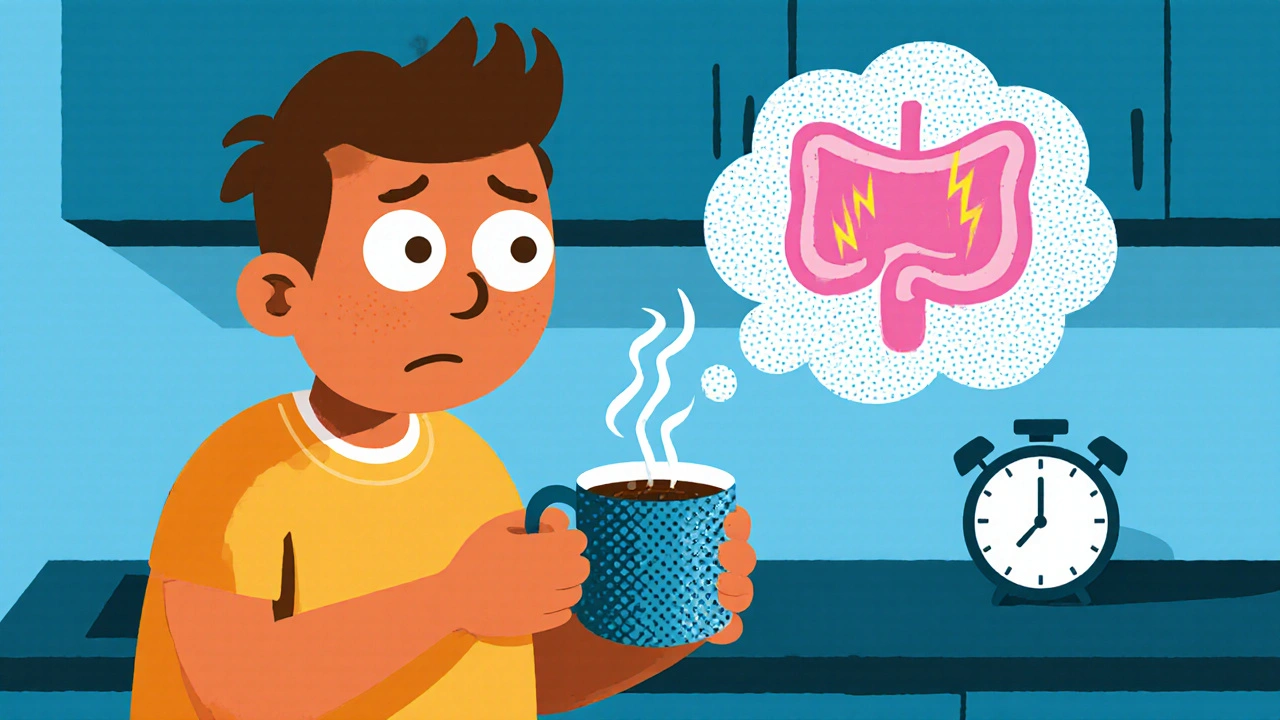Caffeine and Bladder Spasms: Understanding the Link
Explore how caffeine can trigger bladder spasms, who is most at risk, and practical steps to manage symptoms while still enjoying your favorite drinks.
Continue ReadingWhen your bladder sends signals you can’t ignore—sudden urges, frequent trips to the bathroom, even leaks—you’re dealing with overactive bladder, a condition where the bladder muscles contract involuntarily, even when it’s not full. Also known as OAB, it’s not a disease but a group of symptoms that affect millions, especially as people age or after childbirth, surgery, or nerve damage. It’s not just annoying—it can wreck sleep, limit social plans, and make you feel like your body has a mind of its own.
What drives overactive bladder? Often, it’s the bladder muscles, the detrusor muscle that squeezes to empty urine firing off too early. But nerves, hormones, or even caffeine and alcohol can trigger it. Some people have it because of diabetes, multiple sclerosis, or an enlarged prostate. Others? No clear cause at all. The good news? You don’t have to live with it. Anticholinergics, a class of drugs that calm bladder spasms like oxybutynin or tolterodine are common first-line treatments. They work by blocking the signals that make the bladder contract too soon. But they’re not the only option—bladder training, a behavioral method where you gradually delay urination to stretch bladder capacity can be just as effective for many, with no side effects.
And it’s not just pills or exercises. Lifestyle tweaks—cutting back on fizzy drinks, timing fluids, pelvic floor exercises—can make a real difference. Some people find relief with newer meds like mirabegron, which relaxes the bladder differently than anticholinergics. Others need nerve stimulation or even Botox injections in the bladder wall. The key? Figuring out what’s behind your symptoms. Is it stress? Medication side effects? A hidden infection? The posts below dive into how different drugs interact with OAB, what side effects to watch for, and how to balance treatment with your overall health—like how antidepressants can worsen urinary issues, or how diabetes meds might help or hurt bladder control. You’ll find real talk on what works, what doesn’t, and how to talk to your doctor without feeling dismissed. This isn’t just about managing symptoms. It’s about getting your life back.

Explore how caffeine can trigger bladder spasms, who is most at risk, and practical steps to manage symptoms while still enjoying your favorite drinks.
Continue Reading